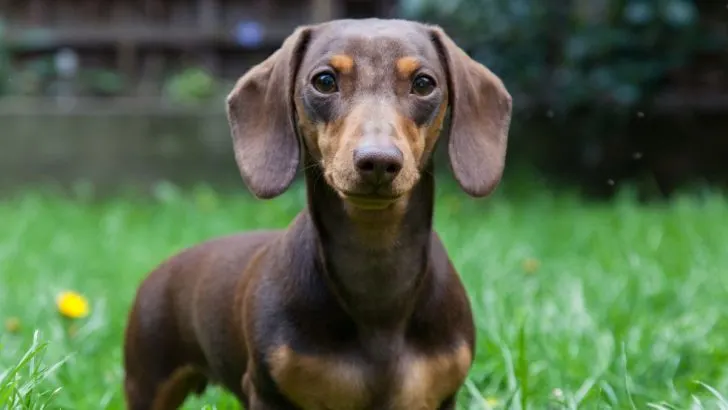The adorable Dachshunds come in more colors and patterns than any other dog breed!
The Dachshund is well known for its specific elongated body and short legs, but this beloved dog breed is also known for its playful personality and undying loyalty.
The Dachshunds come from Germany, and their primary role is that of scenthounds for hunting badgers, rabbits, and foxes.
We even have cases of hunters using packs of Dachshunds to trail wild boars.
However, thanks to their versatility, we can see them in many dog sports, as well as excellent family companions, show dogs, and small-game hunters.
But don’t let this pup fool you by their looks. They are tough enough to take on a badger, and I know I’m indeed not. That is how this breed got its name (Dachs – badger; Hund – dog).
You, however, might know this breed by one of the many nicknames they have, including the Wiener Dog, the Sausage Dog, Doxie, and others.
This adorable dog breed comes in two sizes: the Standard and the Miniature.
Dachshunds that fall between the two weight ranges are usually just oversized miniatures, and they are often called by the slang term “tweenies.”
But since it is the various colors and patterns you are here for, let’s get into that!
The Dachshund Colors
Let’s begin with what the American Kennel Club (AKC) Dachshund breed standard named ‘base’ colors.
Despite the enormous variety in coat pigment and color, there are only two basic pigments that determine the color of dogs: eumelanin (black) and phaeomelanin (red).
All different variations in fur and coat color in dogs are created by these two pigments, which are both forms of melanin.
1. The Red Dachshund
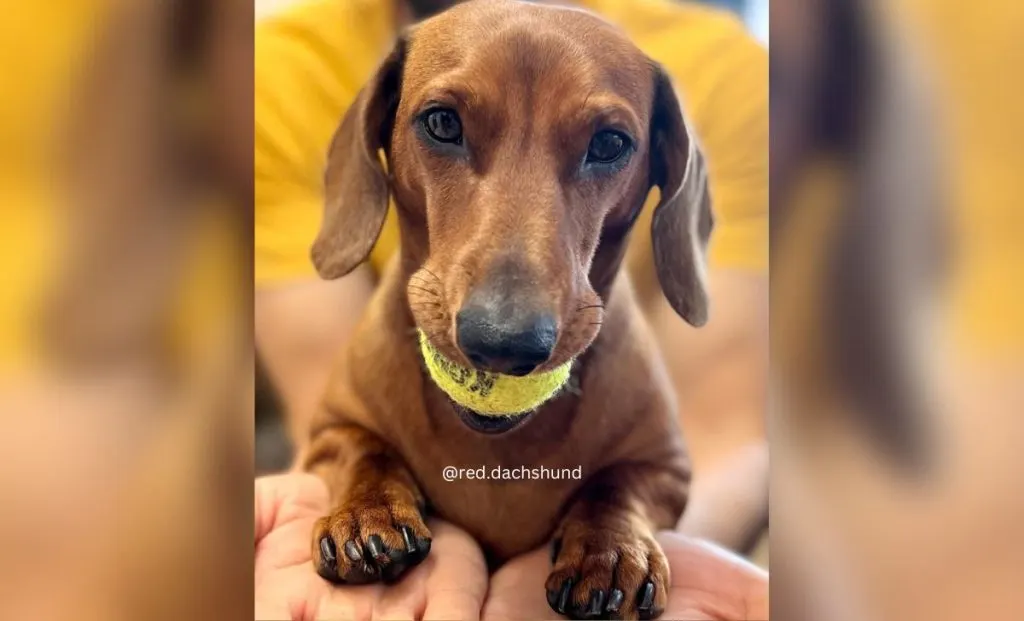
The red color in this breed covers everything from a deep mahogany red to light golden and all of the shades of brown red in between.
Red pups might be clear red or have many black hairs incorporated in their coats, especially when they are young pups.
This is frequently seen on longhair Doxies, leading many breeders of Dachshunds to call these pups ‘sable.’
Do not be fooled though; these dogs are not sables – true sables are extremely rare, and we will discuss more about them later when we go over Dachshund patterns.
The black overlay on red Dachshunds might be heavy along the top of the back and on the ears. That black overlay most often fades as the dog ages and matures.
The Dachshund dogs with heavy black overlay must be registered as ‘red.’
All true red Dachshunds, no matter their hue or coloring, will always have black noses, nails, and brown eyes.
Periodically, a brown dilution gene will wriggle in, resulting in hazel eyes (greenish-brown) and liver-colored noses and nails.
2. Dilute Red (Recessive Red)
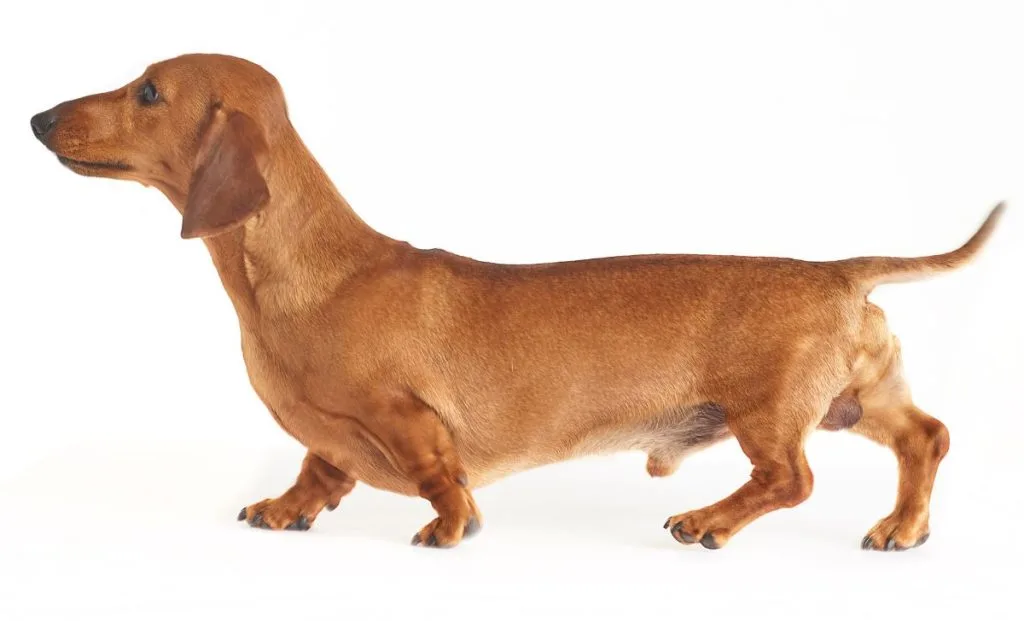
Dilute Reds are induced by a recessive gene called the “e” gene. Both Dachshund parents must be a dilute red or carry the e gene to produce ee reds.
The e gene is a masking gene, and it basically covers all the black or chocolate hairs on the chocolate Dachshund’s body, making it seem a solid red color, although genetically, they could be a different color.
Recessive reds are usually light, almost creamy colored at birth, but they turn more strawberry red as they mature.
3. The Cream Dachshund
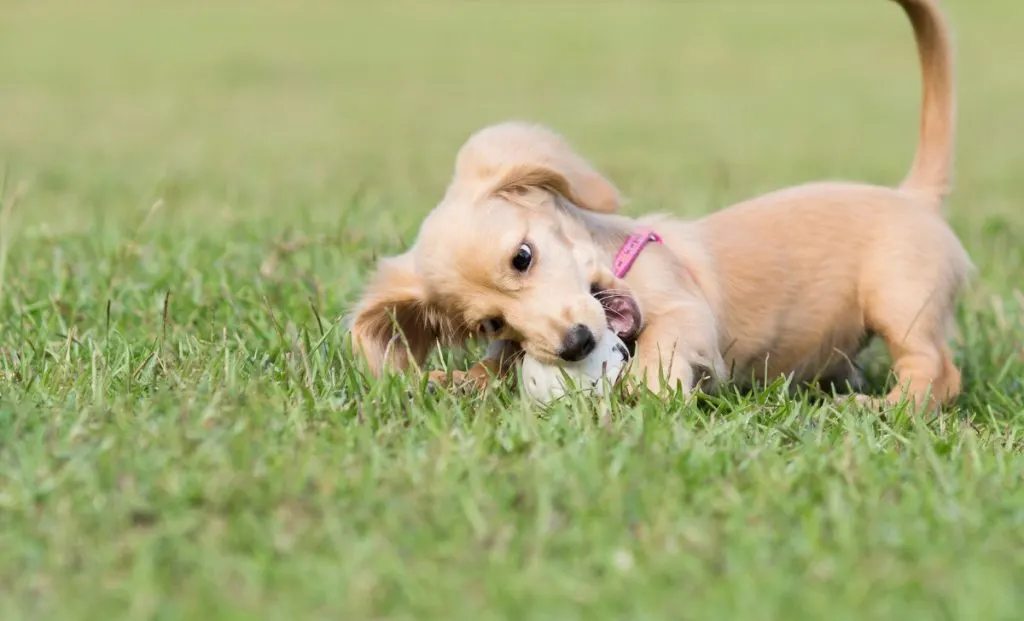
A proper cream dog has no red tint to the coat whatsoever. Cream Dachshunds are a pure and pale color with dark brown eyes, black noses, and black eye rims.
The nails on a cream Dachshund can be brown or black. These dogs might have varying quantities of black hairs incorporated in the coat.
4. The Wheaten Dachshund
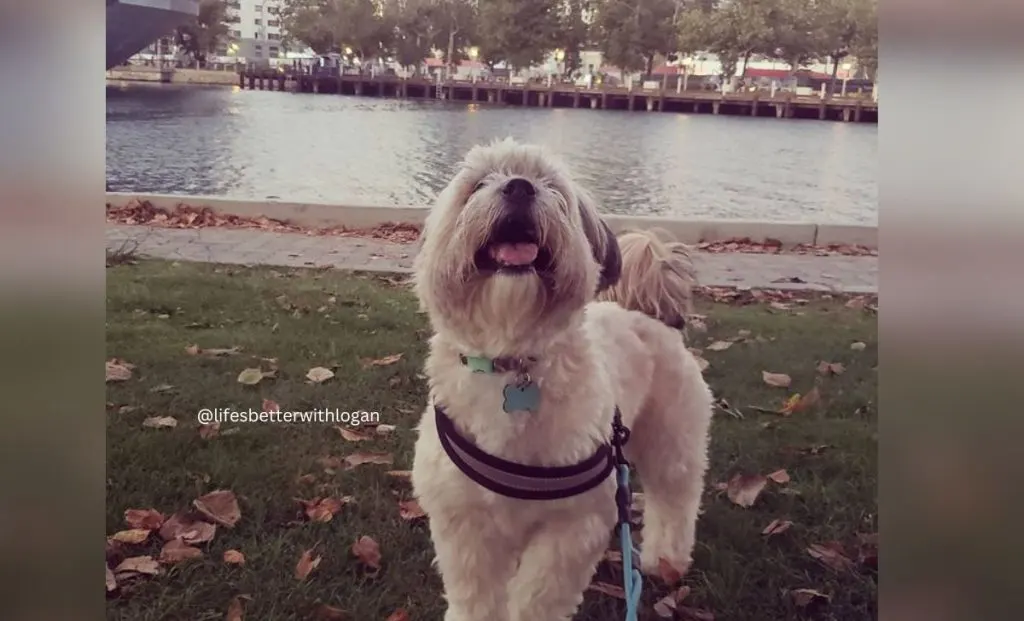
The wheaten Dachshund color is something between red and cream.
As the name gives away, it is light yellow, like the color of wheat. This color is most common in wirehaired Dachshunds.
5. Black & Tan Dachshund
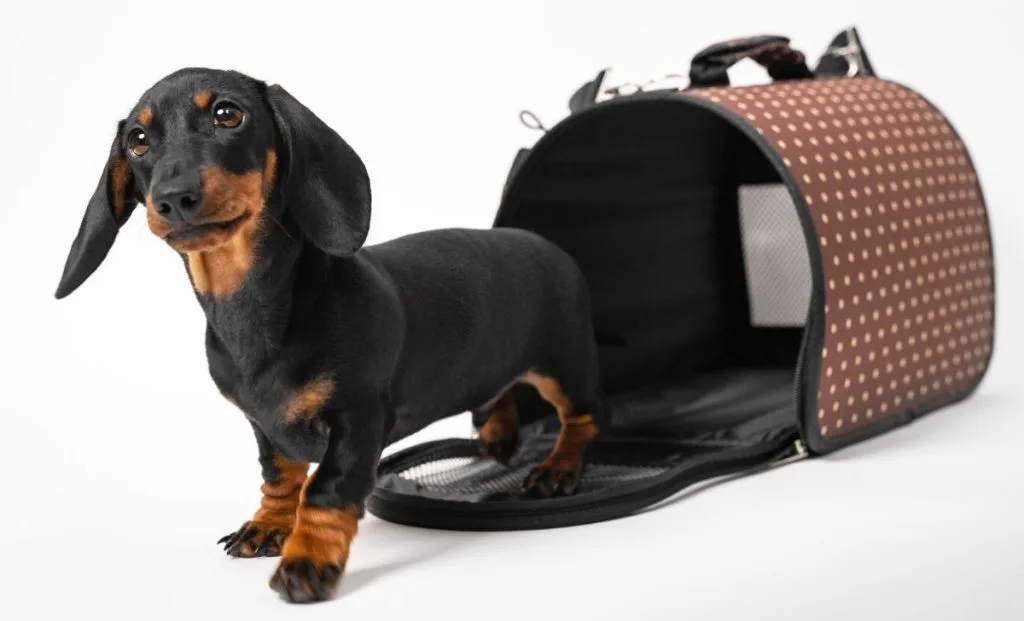
A black and tan Dachshund must have shiny black fur with rich reddish-brown markings on the face, the chest, all four feet, and even under the tail.
The noses and nails of these dogs are black, and their eyes should be a dark brown color.
6. The Black & Cream Dachshund
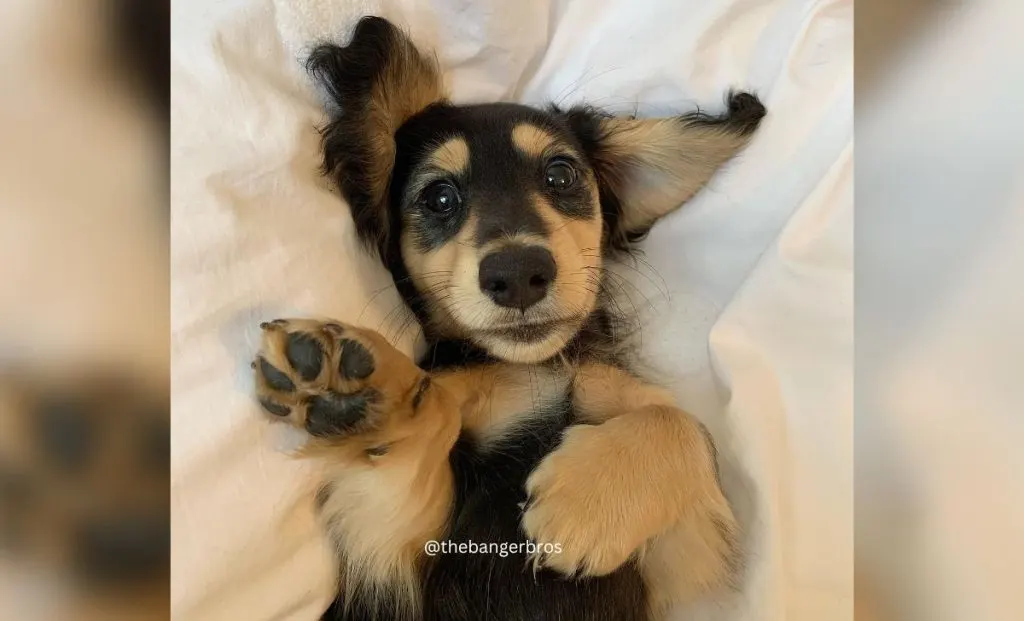
This dog should be a shiny black color with pale cream markings on the face, chest, and feet, as well as under the tail.
The noses and nails of the black and cream Dachshund are black, and the eyes must be dark brown.
7. The Blue & Tan Dachshund
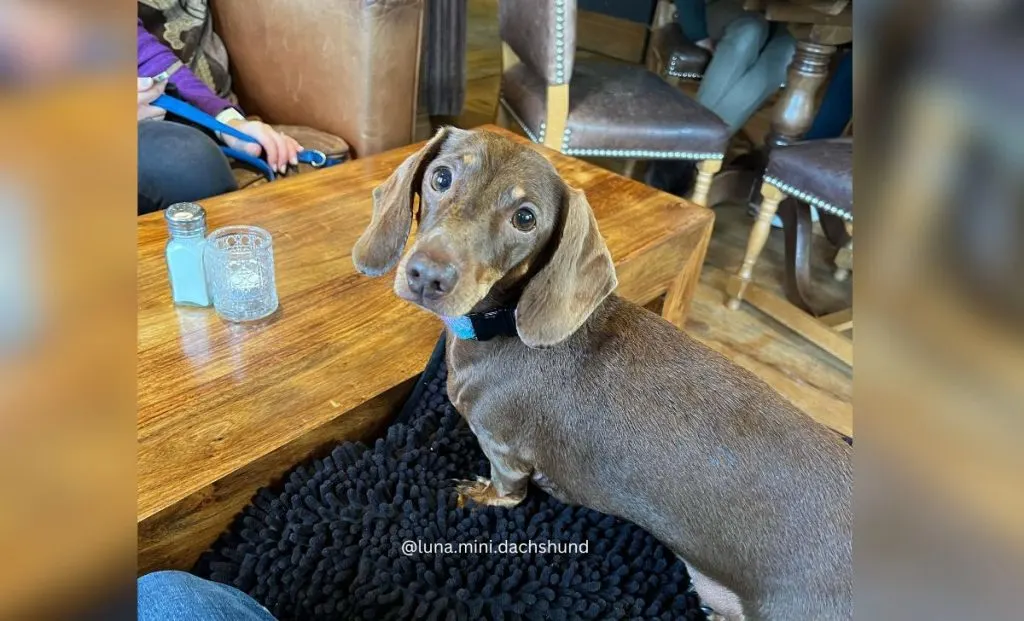
Blue and tan Dachshund is the dilute version of black and tan.
The pup’s primary body color is an even steel bluish-gray. The pup should also have brown markings on his face, his chest, feet, and under the tail.
Usually, tan markings are muted or have a bluish overcast, thanks to diluting factors.
The eye color of these dogs is a grayish shade, as are the nose and nails. Dilute colors like Isabella or Blue can have color alopecia.
Some canines develop it, and some don’t. It depends on each individual pup. Color alopecia causes hair loss or thinning hair. (it can also happen in Blue & Cream Dachshunds)
8. The Chocolate & Tan Dachshund
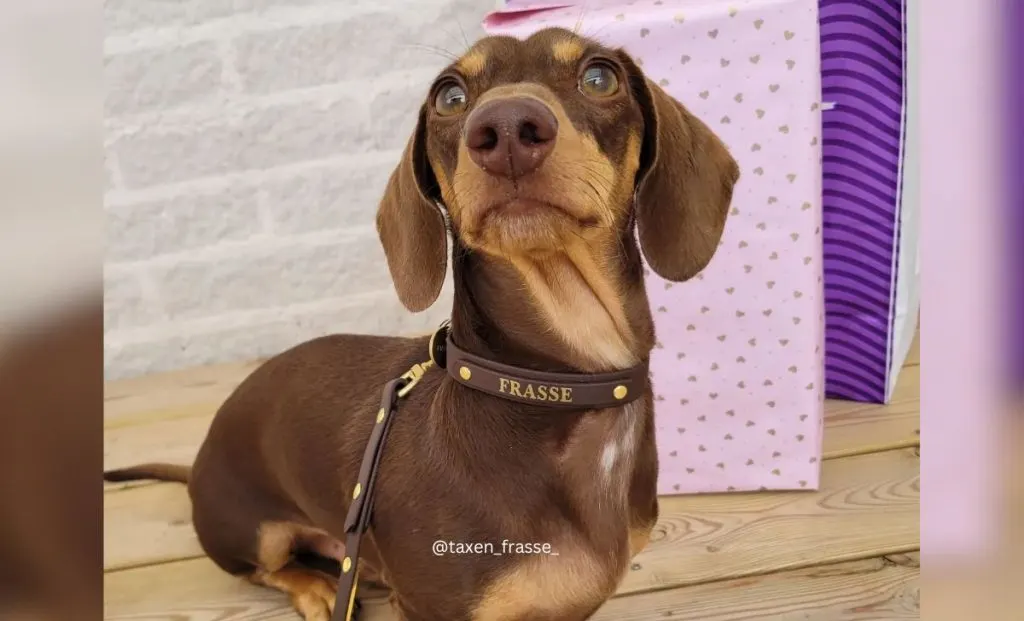
These dogs sport a rich chocolate-brown color on their coat. The chocolate and tan Dachshund has rich reddish-brown markings on the face, his chest, all of the feet, and under the tail.
Dark eye color is favored, but hazel eyes are frequently seen with this color and are acceptable. Nails and noses are mostly liver-colored.
9. The Chocolate & Cream Dachshund
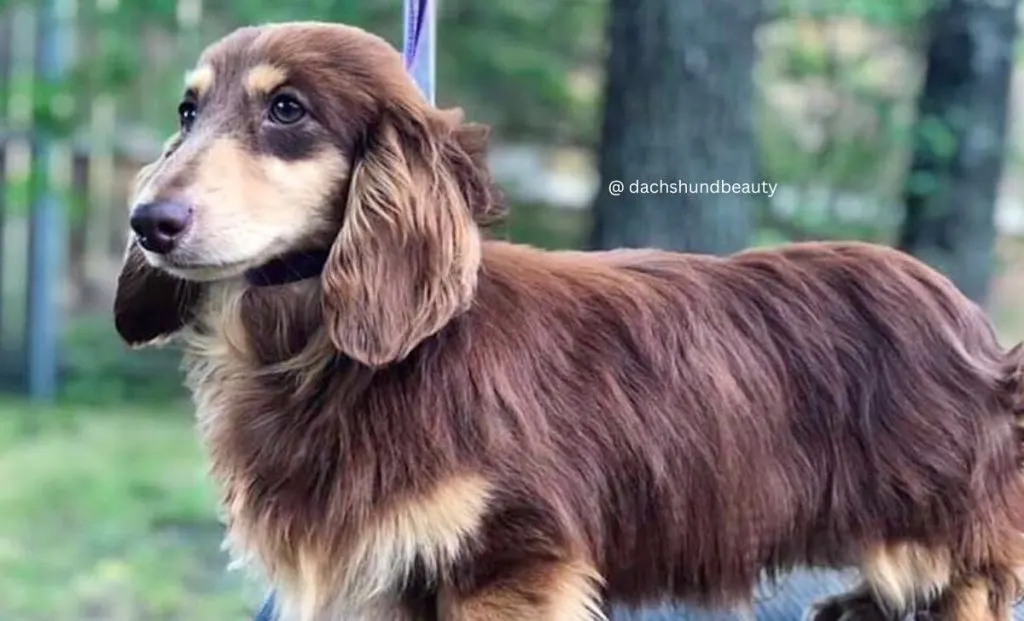
These pups also have a rich chocolate-brown color, but their markings are a pale cream color. The markings must show on the face of the dog, his chest, all four feet, and under the tail.
The nose and nails are black in chocolate and cream Dachshunds, while the eyes are dark brown.
Dark eye color is desired, but hazel-colored eyes are continually seen with this color of Dachshund, making them acceptable by breed standards.
The noses and nails should be liver-colored.
10. The Isabella & Tan Dachshund
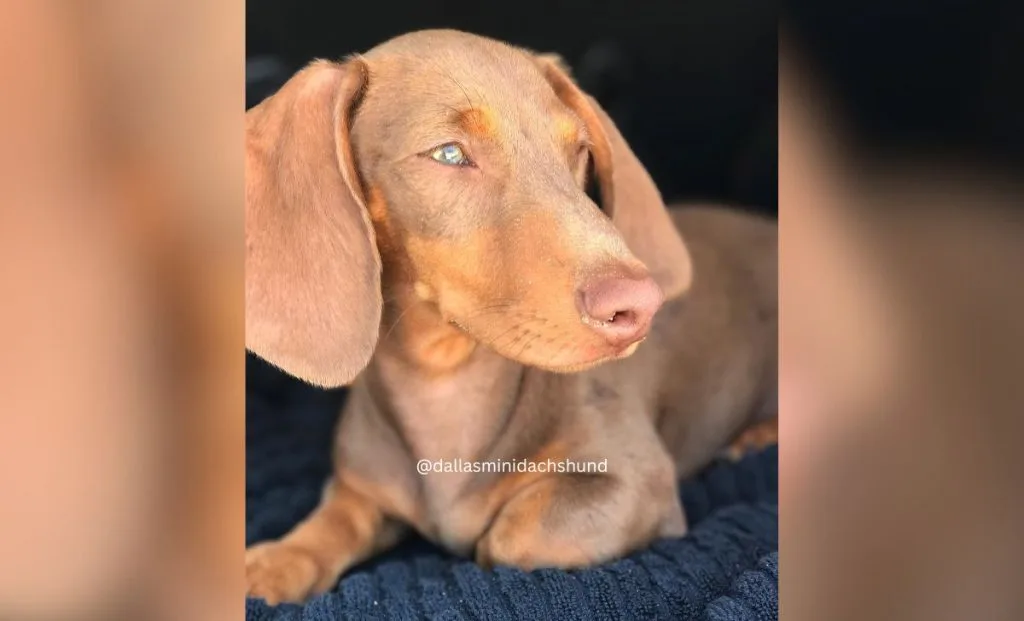
Isabella and tan pups are the dilute versions of chocolate and tan Dachshunds.
The primary color of the dog is a fawn color, similar to the fawn weimaraner dog.
But the fawn Dachshund must have rich reddish-brown markings on the face, on the chest, on all feet, and under the tail.
Eye color is usually a pale grayish-green, and the nose and nail color is a pale pinkish-chocolate.
Dilute colors like Isabella or Blue are often affected by color alopecia.
11. The Wild Boar Dachshund
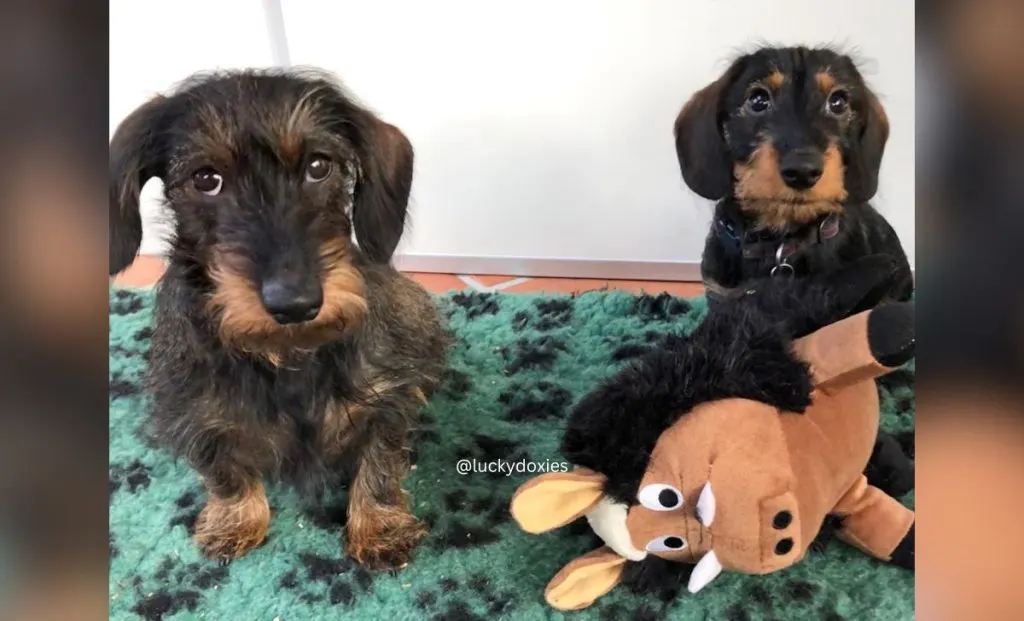
Wild Boar Dachshunds and Chocolate Boar Dachshunds are two unique color combinations found in just a few breeds of dogs.
These colors often appear in the wirehaired Dachshunds.
When we speak about the Wild Boar color, we are talking about a mix of colors that go from light tan to reddish-brown and black.
It’s like the dog has different colors on each hair of their coat, giving them a cool and unique look.
Patterns And Dachshunds
Patterned fur Dachshunds can have different colors mixed together. The very cool markings help us determine what kind of coat they have.
And believe me when I tell you that patterns can get pretty fancy! They can have plenty of colors, markings, and even more patterns on top of that.
It’s like a big mix of fun and colors!
Dachshunds with extra fur markings are usually called Overlay, Ticking, or Striped.
Thanks to the markings, the Dachshund coats are way more fun and interesting.
Allow me to make it more interesting: occasionally, there might not be any visible pattern on the coat of the dog, but the dog is still considered patterned!
These Dachshunds can carry the pattern gene and have pups with patterns. It’s like a secret surprise!
The most common Dachshund pattern coats include the following.
12. The Merle or Dapple Dachshund
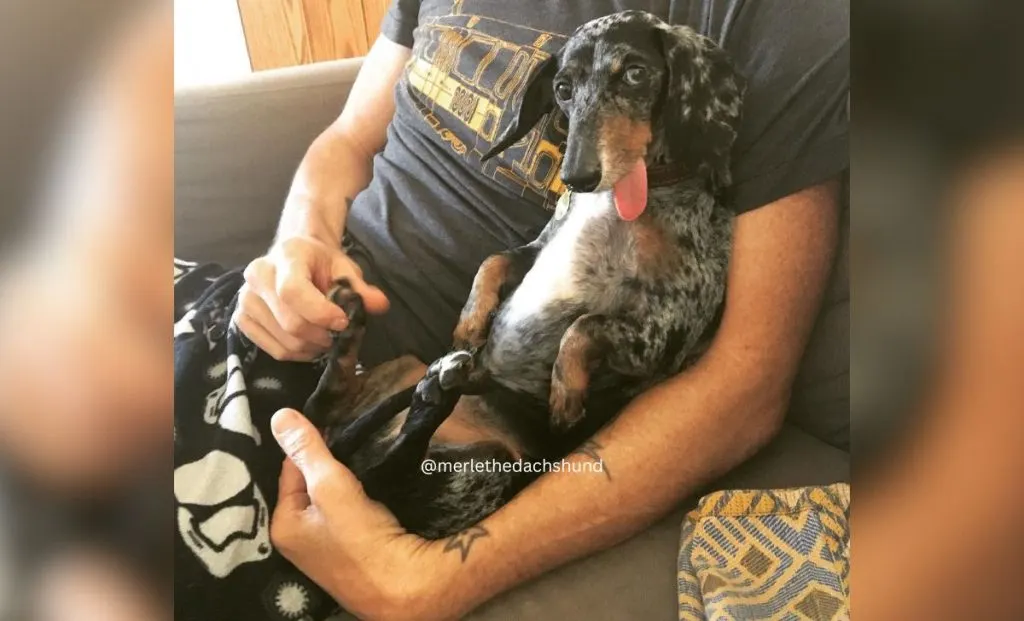
The Dapple or Merle is when you have a bunch of light spots on top of a darker color.
Occasionally, you can even see a combination of Dapple patterns with Piebald, Brindle, or Sable.
The dapple pattern in Dachshund pups comes from a semi-dominant gene, making the base color of the dog show patches of dilution.
Dapples can happen with any base color, and the patches might or might not fade as a puppy ages.
One of the parents must be dapple to produce dapple puppies, and even then, not all puppies in a litter will be dapple.
13. The Double Dapple Or Double Merle Dachshund
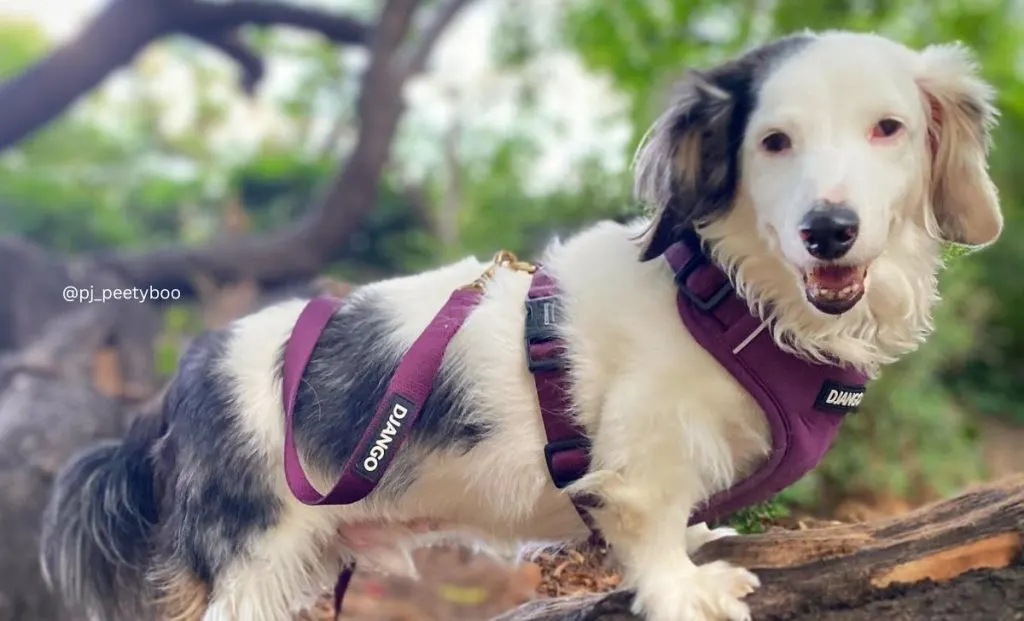
When two dapple Dachshund dogs are bred together, one of the pups can inherit the dapple gene from both of the parents (called the dapple dapple gene), resulting in a double-dapple puppy.
Double-dapple Dachshunds will usually have large areas of white coloring in addition to the patches of dilution.
These puppies can have a lot of health issues. Double dapple Dachshunds can be partially deaf or completely deaf.
They can have reduced vision or even be born completely blind, or be born with underdeveloped or missing eyes.
Many internal health issues can also be noticed in double-dapple Dachshund pups. We can also see these Dachshunds are usually, though not always, asymmetrically marked.
Extreme care and caution must be taken to avoid double-dapple Dachshund breedings.
This is forbidden, and genetic testing should be used before breeding if there is any question on whether a dog may be a dapple.
There is no excuse for deliberately breeding for this pattern with all the flaws and health risks that go with it.
14. The Brindle Dachshund
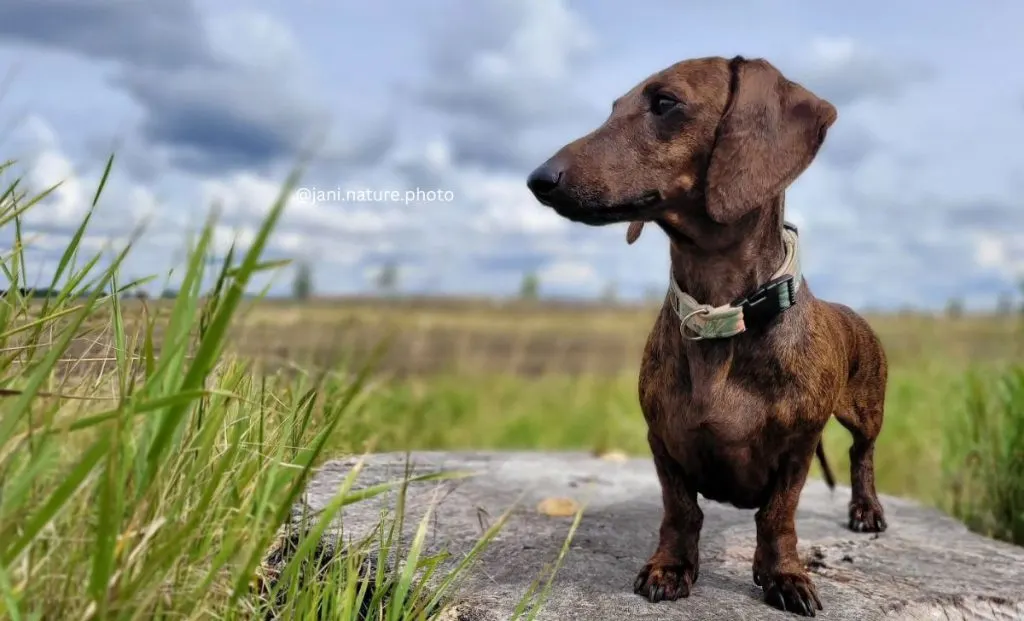
The pattern we call brindle causes something similar to tiger stripes in dogs.
Brindle can happen in conjunction with all coats and base colors. In tan-pointed Dachshunds, the stripes will only appear on the tan points.
The brindle pattern is a dominant trait. Only one of the parents needs to be brindle to make brindle pups.
In all dog breeds, there is a genetic rule – a canine cannot hold the brindle gene without being brindle itself.
Dachshund’s most everyday brindle combinations are red brindle and black and tan brindle! This color is quite popular; however, it is not officially recognized.
15. The Sable Dachshund
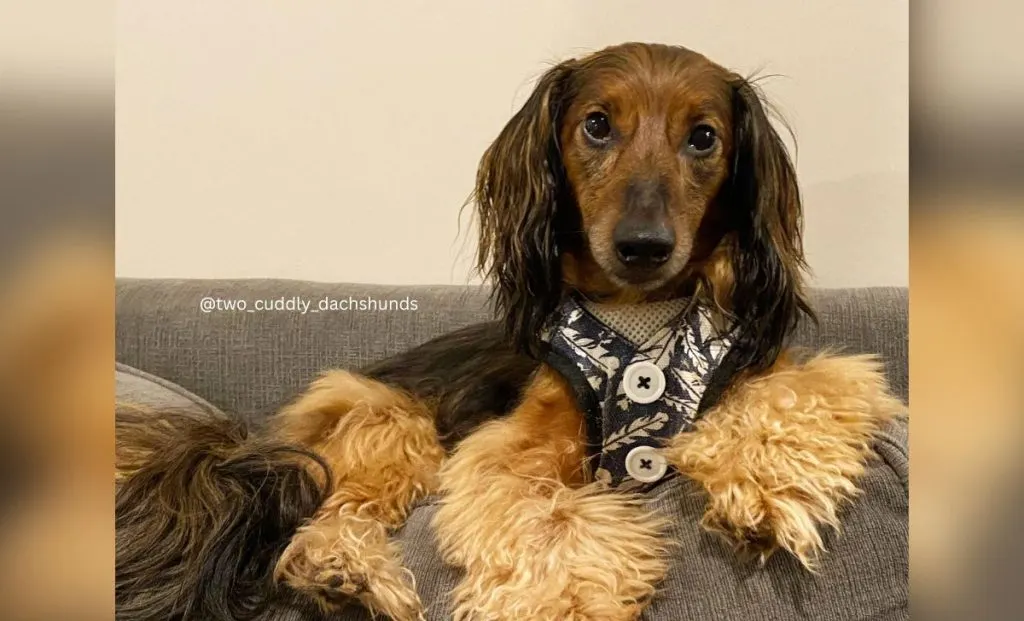
The sable pattern is only seen in longhaired Dachshunds.
As is the case with wild boars, in sable dogs, every individual’s hair is banded at the base near the skin, with red and black coloring at the tip.
A true sable is the only coat color and pattern that is not seen in abundance in the Dachshunds. It can appear black and tan at first look from a distance.
16. The Piebald Dachshund
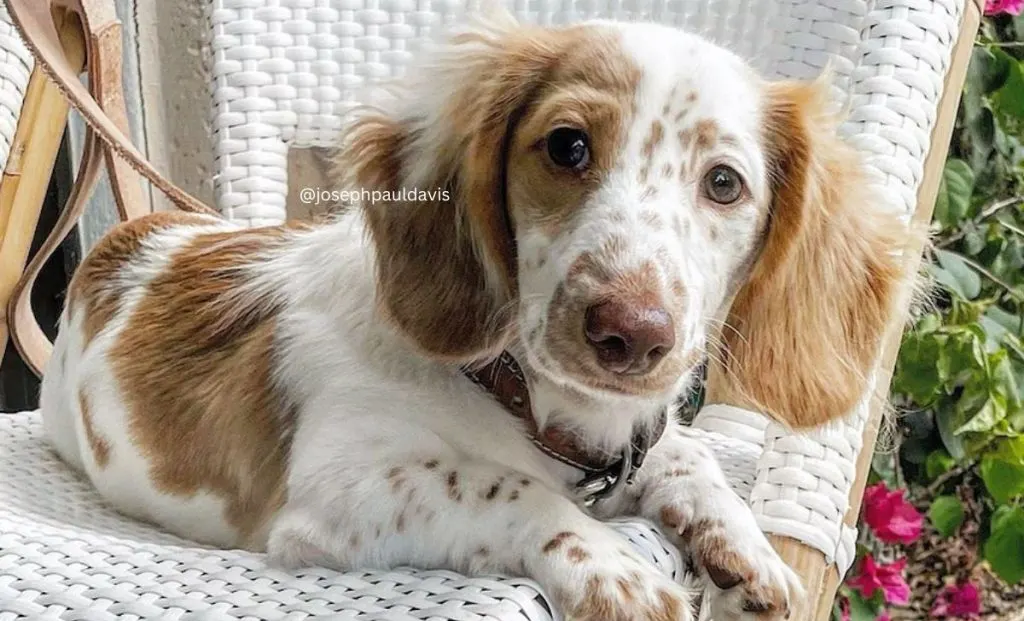
The piebald pattern in this breed is made up of areas of solid color over a white base coat.
Most pups have a white-tipped tail, and sometimes they have small spots on the white. This is called ticking.
Regular piebald Dachshunds will have 50 percent of their coat in white color.
With this pattern, the Dachshunds will always have brown eyes; it is only in the dapple piebald pattern of Dachshunds that you may get one or both blue eyes.
To breed a piebald, both parents’ dogs must have the piebald recessive gene, unlike the other patterns (dapple, sable, or brindle), where you only need one parent.
Two true piebald Dachshunds will produce a full litter of piebald pups.
17. The Dapple Piebald Dachshund
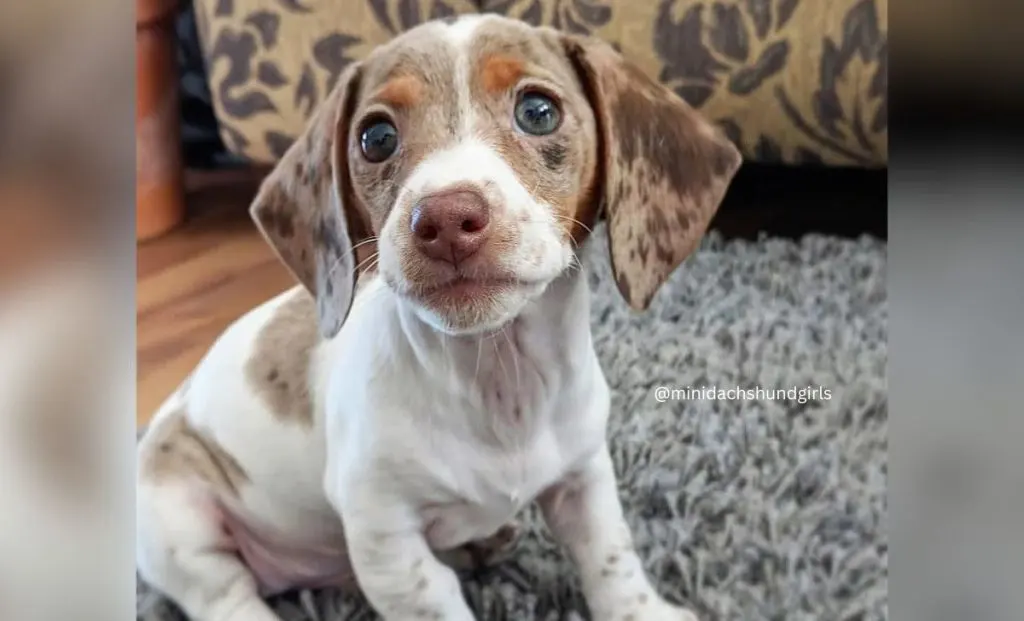
It can be hard to distinguish between a double-dapple Dachshund and a dapple piebald Dachshund. A close study of the pedigree or genetic testing is periodically required.
The only giveaway we might get is if the white areas show any ticking; ticking is only seen in piebalds.
Again, RUN AWAY fast from any breeder purposely breeding for double-dapples. It is wrong to purposefully produce puppies with health concerns.
The Dachshund Coat Types
As we mentioned before, this breed has three different coat lengths. We have the smooth Doxie, the longhaired one, and the wirehaired one as the third option.
- The smooth-coated Dachshunds have sleek and short fur that almost does not require grooming, and shedding from this type is relatively low. Even though this breed usually doesn’t shed much, you still need to care for that lovely fur!
- However, longhaired dachshunds have gorgeous flowing locks that demand much more attention when brushing and caring. The fur of the longhaired type tends to be finer and can be prone to matting if neglected, so be careful.
- Lastly, we have the wirehaired Dachshunds. This type has a coarse outer coat with a thick and dense undercoat, giving the dog a rugged appearance. The wirehaired Dachshund needs regular grooming for stripping or plucking the fur to maintain the desired texture.
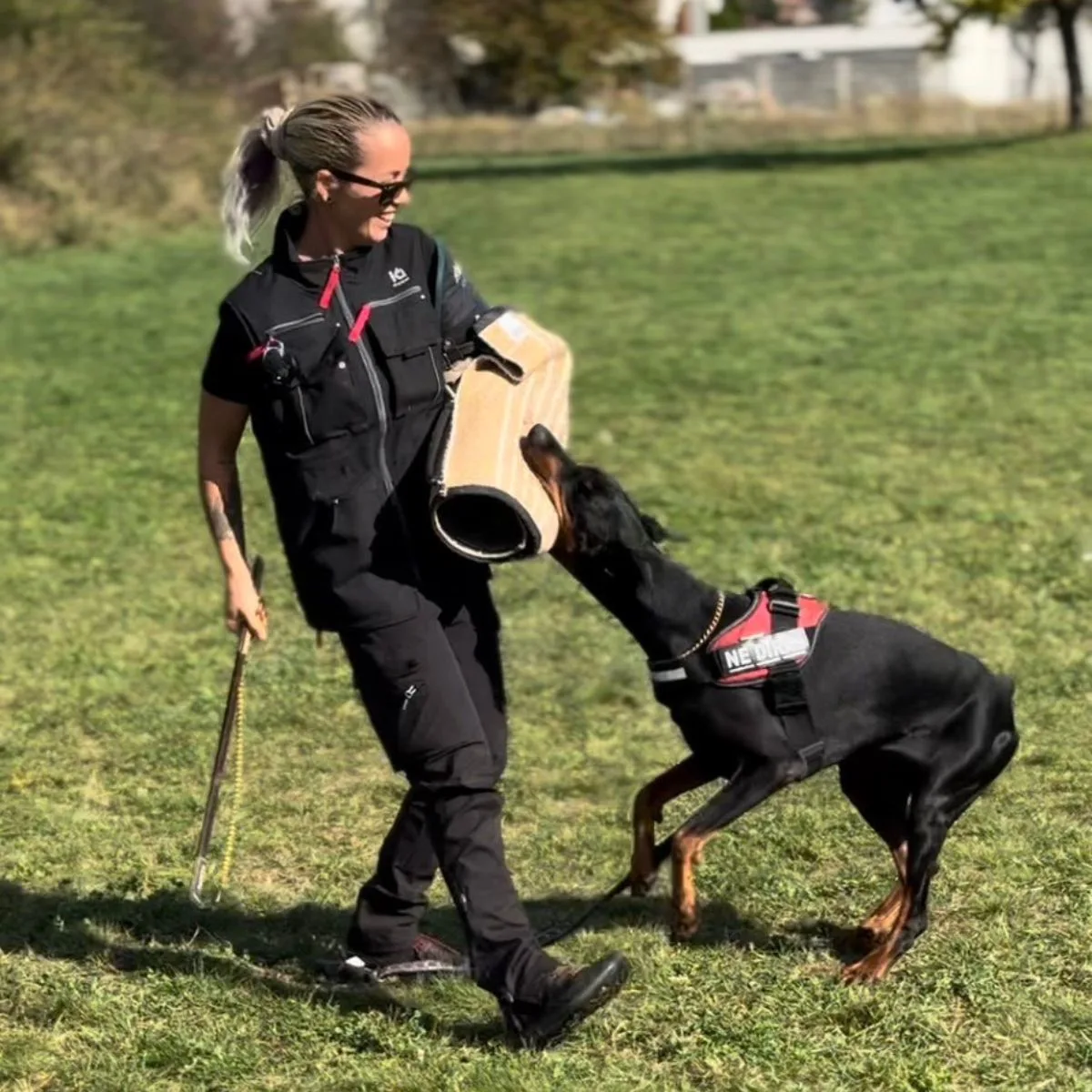
Nandina has been a lifelong dog owner and enthusiast. She shared her home with multiple breeds, including Giant Schnauzers, Cane Corsos, and Huskies. Currently, she is raising a three-year-old rescue and a working-line German Shepherd puppy.
Actively engaged in IGP dog sports for two years, Nandina is a certified instructor for basic obedience and socialization. She works as a trainer in her local dog sports club, and in her spare time, she handicrafts biothane gear for dogs.
